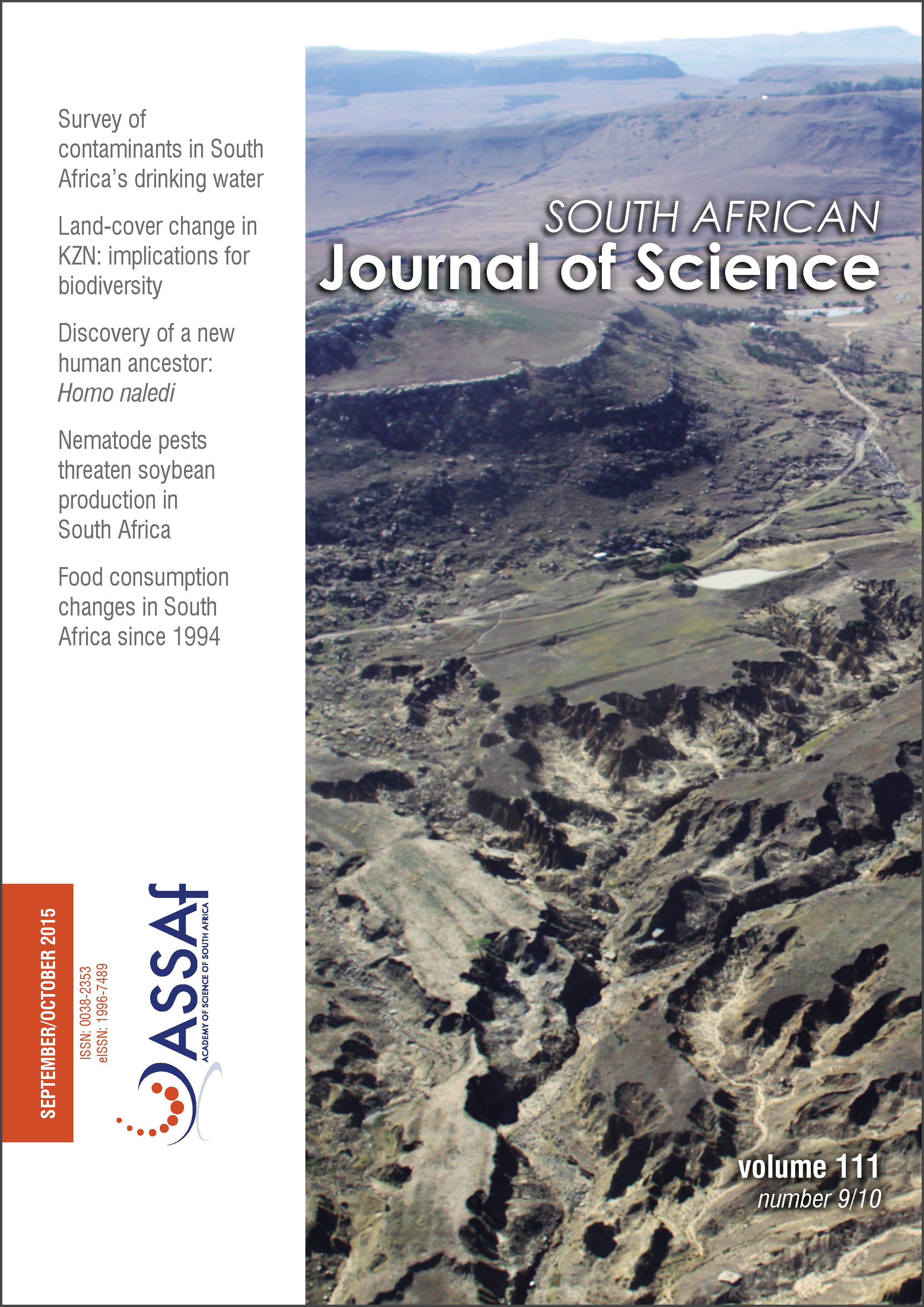Estimation and monitoring of aboveground carbon stocks using spatial technology
DOI:
https://doi.org/10.17159/sajs.2015/20140170Keywords:
remote sensing, geographical information systems, GIS, subtropical thicket, model developmentAbstract
Monitoring temporal changes of aboveground carbon (AGC) stocks distribution in subtropical thicket is key to understanding the role of vegetation in carbon sequestration. The main objectives of this research paper were to model and quantify the temporal changes of AGC stocks between 1972 and 2010 in the Great Fish River Nature Reserve and its environs, Eastern Cape Province, South Africa. We used a method based on the integration of remote sensing and geographical information systems to estimate AGC stocks in a time series framework. A non-linear regression model was developed using Normalised Difference Vegetation Index values generated from SPOT 5 High Resolution Geometric satellite imagery of 2010 as an independent variable and AGC stock estimates from field plots as the dependent variable. The regression model was used to estimate AGC stocks from satellite imagery for 1972 (Landsat TM), 1982 (Landsat 4 TM), 1992 (Landsat 7 ETM), 2002 (Landsat ETM+) and 2010 (SPOT 5) satellite imagery. AGC stocks for the respective years were compared by means of change detection analysis at the subtropical thicket class level. The results showed a decline of AGC stocks in all the classes from 1972 to 2010. Degraded and transformed thicket classes had the highest AGC stock losses. The decline of AGC stocks was attributed to thicket transformation and degradation, which were attributed to anthropogenic activities.
Published
Issue
Section
License

All articles are published under a Creative Commons Attribution 4.0 International Licence
Copyright is retained by the authors. Readers are welcome to reproduce, share and adapt the content without permission provided the source is attributed.
Disclaimer: The publisher and editors accept no responsibility for statements made by the authors
How to Cite
- Abstract 494
- PDF 740
- EPUB 207
- XML 218












.png)